Before you take the journey to become a personal trainer, you need to know the roles and responsibilities of what it means to be a fitness professional.
If you’ve envisioned yourself in the personal trainer position, maybe even wondering, “what do personal trainers do,” this is the article for you.
A career as a personal trainer can be a great option for those looking to enter the fitness industry, as it provides the opportunity to work in a wide variety of areas, from teaching group classes to one-on-one personal training sessions.
Below, we’ve outlined the comprehensive list of items that make up the personal trainer job description:
- Personal trainer responsibilities and duties
- What you do
- What you do not do
- Necessary skills
- Education requirements
- Continuing education
- Experience requirements
- Places you can work
A job description for a personal trainer typically includes responsibilities such as designing and implementing fitness programs, motivating and educating clients, monitoring progress, and providing general advice on nutrition and lifestyle changes.
As you embark on educating yourself on the ins and outs of the personal trainer life, you will feel much more confident in your decision to become a fitness professional.
Let’s move forward!
Exclusive TA Offers |
||
Most Popular Cert
| Great Option
| Best Cert for you? 
|
Good Option
| Good Option
| Good Option
|
Responsibilities and Duties
Personal training provides multiple opportunities: you can be your own boss and set your own hours.
However, those hooked on fitness, dedicated to training, must first know the duties and responsibilities of their job as a personal trainer.
These duties include staying within your scope of practice, maintaining professionalism, and abiding by your fitness certification’s Code of Conduct.
You represent not only your fitness certification but also your company or business entity.
Therefore, you need to establish and maintain good rapport with your clients and the gym’s other staff members.
Having the right attitude is essential for success as a personal trainer, as it is important to be positive, motivating, and encouraging in order to help clients reach their fitness goals. It’s just good customer service, plain and simple.
A trainer should create safe and effective exercise programs to help clients improve their overall strength, cardiovascular health and fitness levels, flexibility, and balance.
Briefly put, your job includes helping clients reach their goals along with achieving an overall improvement in their health and fitness!
This can prove challenging and fun at the same time.
Keep in mind: every individual client offers unique challenges. You may or may not need to omit or modify certain exercises. The details matter, so you can affect the biggest positive impact on each individual.
Before you train any client, you will take the client through an initial pre-participation screening.
This screening typically includes the client’s health history, current health status, and even current lifestyle, which all influence how you should design your programs.
Once you obtain the pre-participation screening, you consult with the individual client, and figure out how to create the most appropriate, effective exercise routines, and take it from there.
Next comes helping individual clients acknowledge and set their goals.
Jane wants to lose 10 pounds.
Mark wants to train for a marathon and needs to improve his speed.
After recovering from knee surgery, Sharon wants to start exercising again.
Robert, an active senior, wishes to improve his balance after a frightening fall.
Once an individual client proposes a goal, what does a personal trainer do?
First they must determine if their client’s goals are S.M.A.R.T.

Most of all of the top personal training certifications in the industry say that S.M.A.R.T. goals must be:
- Specific
- Measurable
- Achievable
- Relevant
- Time-bound
Personal trainers determine specific goals which are often clear and concise.
Specific goals serve as a motivation tool for clients.
Can your client’s goal be measured?
Oftentimes, clients will have goals that seem virtually immeasurable or vague.
Like a weight loss goals of dropping 20 pounds in one week!
Personal trainers need to be able to measure a client’s goals, to keep track of his or her progress.
Tasha just told you that she wants to lose 30 pounds of visceral fat in the time span of a week and a half.
Is this fat loss goal achievable?
ABSOLUTELY NOT!
Personal trainers must make sure that clients set achievable, realistic goals to avoid disappointment and bodily harm.
Next, smaller goals should feel relevant, or “in alignment” with the client and his or her larger fitness and health goals.
What may be a relevant goal for a bodybuilder may be entirely different from a relevant goal for a dancer or a swimmer.
Relevant goals stay in line with the client’s sport or current situation, making the goals more personal.
Without a doubt, personal important goals keep clients motivated on the path to achieve them.
Lastly, comes time-bound goals.
Your client can set a goal to increase his or her cardiovascular fitness level in the time frame of four to six weeks.
This exemplifies a time-bound goal.
The client gives a realistic span of time to improve his or her cardiovascular fitness level.
Personal trainers can use a variety of time-bound goals as motivation tools as well!
On the topic of food, let’s say your client brings up nutrition during a session and asks for your advice?
What can a personal trainer do in this situation?
Personal trainers acquire some basic nutrition knowledge; however they are not nutritionists or dietitians.
CPT textbooks exist to prepare trainers to help clients exercise and the nutrition information provided only gives trainers a brief glimpse into the field of dietary options, describing topics like energy balance and the function of different macro and micronutrients.
You will encounter clients who follow all different types of diets and lifestyles, and the field of nutrition constantly changes with new studies and data giving people alternative ways of thinking regarding what constitutes proper nutrition.
It is NOT within a personal trainer’s scope of practice to create diet and nutrition plans.
A professional more qualified, such as a nutritionist, may be able to deal with this.
Therefore, personal trainers should refer clients who have further questions about nutrition to a more qualified professional, like someone with a nutritionist certification.
And now for the fun part: exercising!
As a personal trainer, your responsibility mainly includes instructing individuals on proper form and technique in regards to both training with weights and cardio modalities.
This keeps the client safe and avoids potential injury on their fitness journey.
“Don’t strain; just train!”
You will instruct clients on how to properly use gym equipment and machines.
Once clients feel comfortable on machines, her or she may progress to free weight movements.
Overall, you will help clients complete their exercise routines in a safe, effective manner in the space provided by your workout area.
Exclusive TA Offers |
||
Most Popular Cert
| Great Option
| Best Cert for you? 
|
Good Option
| Good Option
| Good Option
|
What You Do
So far, we reviewed a comprehensive breakdown of the responsibilities and duties of a personal trainer.
Let’s now cover the basic job summary of a personal fitness trainer.
So what exactly is the certified personal trainer job description?
The personal trainer fundamental roles include:
- Implementing safe and effective personal and group exercise programs
- Understanding the importance of pre-participation screening and interpretation of results
- Strong desire to help clients reach their goals
- Excellent communication skills and motivational skills
- Dedicated to maintaining integrity, client confidentiality, and professionalism
- Committed to evolve physically as well as mentally
If you can do all of the above tasks, your career in the fitness industry will start off on a strong note.
Most of all of the leading NCCA personal trainer programs cover the basic tenets of fitness.
You learn anatomy and physiology, bioenergetics, biomechanics, nutrition, exercise program designing, exercise techniques, pre-participation screening, special populations, and more.
A personal trainer typically provides one-on-one or group training sessions to help clients reach their fitness goals, which may include developing strength, increasing endurance, and improving flexibility.
Knowing these key concepts benefits a trainer, but that coach must apply their knowledge as well.
Are your clients straining, paining, or training?
You should create effective exercise programs and routines with a high margin of safety.
Monitor your clients.
How are their knees when they squat?
Should Sharon really do box jumps post knee surgery when she complains about residual pain?
Do you spot Mark to ensure his wrists are in line with his hands as he bench presses?
When training clients, you MUST design safe workout templates that match individual client goals and current health status.
But prior to clients exercising, trainers need to make sure clients go through a pre-participation screening to ensure appropriate fitness training.
Knowing how to use common fitness and movement assessments and interpret results gives you the framework to establish customized training programs. Once you see where clients are, you can take them where they want to go with a solid exercise routine.
This relates to all things: muscle gain, conditioning, mobility. Put the “personal” in personal training. This sort of personal attention and support gives you the best chance at helping your clientele.
This is one of the benefits of one-on-one training versus a group class. You can take the time to create tailor-made exercise selections, loads, and rest periods that fit an individual’s needs.
You love fitness, enjoy motivating others to reach a goal and enjoy helping others.
Does this sound like you?
If so, then without a doubt, you will thrive in a career as a personal trainer!
Personal trainers must prioritize client’s goals above all else for maximum benefits. Key characteristics in becoming a personal trainer also include top-notch communication skills and motivational skills.
Instructing and motivating clients through their exercises makes training much more effective and enjoyable!
Personal trainers must maintain integrity and good rapport in a workplace environment.
Your credibility depends on this.
Moreover, you need to maintain client confidentiality.
Keeping client-related information secure leads to a better relationship.
In the case of personal training, sharing is NOT caring!
Personal trainers do their due diligence to maintain the utmost professionalism as they represent their fitness certification and company; and, well, themselves.
On a final note, personal trainers should embody a strong desire to improve themselves both mentally and physically, self-educate, and exercise self-awareness.
Again, if this sounds like you, you will thrive as a personal trainer!
Preach what you practice.
But first, make sure that you practice exactly what you preach and set a good example for your clients.
What You Do Not Do
Alongside knowing what a personal trainer does, we need to cover and complete your understanding of what a personal trainer does and NOT do.
According to the industry’s top fitness programs, common things to avoid in your role as a fitness professional include:
- Diagnosing
- Giving medical advice
- Creating specific meal plans
- Massaging or touching clients
- Providing counseling
- Having romantic relationships with clients
- Allowing your credentials to expire
Personal trainers must refrain from diagnosing and providing medical advice at all times.
Diagnosing lies beyond our scope of practice and may cause harm to clients.
If a client has a question that addresses a medical condition or any injuries, personal trainers should refer him or her to a qualified physician.
Personal trainers refrain from creating specific meal plans for clients.
Again, creating meal plans lies outside a trainer’s areas of expertise.
You are only to create exercise programs!
Furthermore, according to the Australian Institute of Fitness (AIF), personal trainers should avoid training all clients in the same fashion.
Everybody’s body moves differently, everyone experiences different issues and has different goals.
To ignore this would be ineffective training.
Personal trainers must prioritize client’s goals above all else.
Moreover, you should not use massage and other forms of inappropriate touch.
These are incorrect and unprofessional.
PERIOD.
Although clients may naturally feel more inclined to vent to us and express their thoughts and feelings, trainers do fall under the category of therapists.
Personal trainers do not provide any type of mental health counseling or talk therapy to clients.
These range of activities fall beyond our scope of practice.
When do personal trainers have romantic relationships with clients?
N.E.V.E.R.
NEVER.
Do not engage in any romantic relationship with clients at any time.
This is beyond inappropriate!
Finally, personal trainers must keep up with their licenses and certifications so that they do not expire.
Personal trainers should not allow their credentials to expire.
Necessary Skills
Successful personal trainers maintain three crucial skills:
- Professionalism
- Communication skills
- Motivational support
Professionalism ensures that you do your due diligence to keep your rapport and expertise on par!
Communication skills allow you to actually coach clients effectively.
Without proper communication skills, personal trainers will encounter difficulties with keeping clients engaged.
Finally, supporting your clients from a motivational standpoint gives them the confidence they need as clients strive to reach their health and fitness goals.
Every client is different and some require more encouragement than others, but you need to be prepared either way to motivate them during workouts.
When you choose the correct certification for you, know that each organization offers a slightly different focus when it comes to exercise topics.
If you are interested in a particular piece of knowledge, choose accordingly.
A personal trainer can help individuals reach their fitness goals by providing guidance and motivation, and there are various qualifications and certifications available to become a certified fitness instructor.
Our ISSA review covers how the ISSA CPT teaches a more complete business skills toolset than the others. If you look at ISSA vs NASM, you see that NASM covers corrective exercises to a greater extent. Our free NASM study guide and NASM exam questions give you more insight if you go for the NASM CPT.
When between NASM or ACE, know that the ACE CPT contains the best exercise psychology content. We have ACE test questions and an ACE guide to help you “ace” their exam.
The NSCA CSCS remains the best athletic performance certification. It’s a hard one to pass so pick up our CSCS study material and CSCS test to make your life easier. Finally the ACSM certification could be a good option for those going into careers in exercise science.
Exclusive TA Offers |
||
Most Popular Cert
| Great Option
| Best Cert for you? 
|
Good Option
| Good Option
| Good Option
|
Salary
So how much do personal trainers make?
A personal trainer can expect to pay for certifications, insurance, and other necessary expenses, but can also earn a competitive salary depending on the gym or fitness facility they work for.
According to the Bureau of Labour Statistics, personal trainers earn roughly $40,510 per year or $19.48 per hour as of 2020.
Note these various factors which may definitely influence your income:
- Geographic location
- Education level
- Certifications
- Experience level
- Specialization
Master Personal Trainers (MPTs) may generate anywhere between $21.00 and $36.00 per session.
In commercial gyms, you could be paid hourly to provide general service to members on the gym floor.
This can help you meet new people and acquire clients.b
Per session, employees may earn between $8.50 and $15.00, depending on your education, certifications, and experience.
For instance, a trainer who is a group fitness instructor may often have a higher salary.
Whether you work full-time or part-time is another factor that influences your total salary, similar to other jobs.
Keep in mind that this rate comes to just a percentage of the actual value of the individual training session.
Sales bonuses also add to your earnings at most commercial gyms, meaning you can be rewarded for completing “x” amount of sessions in a given period of time.
However, Equinox is one of the highest-paying commercial gyms for experienced personal trainers compared to the other options.
On-the-floor hours make between $26.00 and $31.00 per session.
Additionally, you may earn $64.00 or $74.50 per training session.
Personal trainers working independently or in private studios have much greater income potential.
We’ve seen private studio rates between $35.00 – $65.00 or more per session.
However, your salary in a private studio depends entirely on whether you are an employee, an independent contractor, or a rent-by-the-hour trainer.
Working independently from your own home gym, in a client’s home, or even virtual training makes your income much more flexible, as you may set your own rates!
However, even though most gyms and studios give you fixed rates, your total salary is up to you as you can add more sessions to you schedule each week to increase your total income.
Education Requirements
To work at a gym, you will need a high school diploma, a current certified personal trainer and/or group fitness instructor certification(s), and current CPR/AED and First Aid certifications. You must be at least 18 years of age.
Having some post-secondary education, or a college degree in a related field, such as exercise science or kinesiology, is not required but can certainly be useful when trying to land a job from potential employers.
Did you know you can work as a personal trainer without being certified?
Now you know!
However, take very strong caution. While no current laws exist that require personal trainers to be certified, this may change.
Though technically legal, you run a major risk of hurting a client, big legal fees, and simply not being able to find work if you train clients with a certification.
So, do you have to be certified to be a personal trainer? Yes and no.
To be a successful, good personal trainer, please get certified, despite the lack of regulations.
As a personal trainer, it is important to understand the responsibilities that come with the job, such as providing guidance on correct exercise form, motivating clients to reach their aspirations, and helping them develop healthy lifestyle habits and, in addition, you need to make sure to adhere to safety standards as well.
Just because you could never mean you should! Also, some personal training insurance will require a certification qualification.
You shouldn’t stress yourself when obtaining a personal trainer certification of your choice.
No matter the certification you choose, the well-researched MVP study packages from Trainer Academy will help to reduce your study time and achieve a 99% pass rate – not forgetting our money-back guarantee!
Click on the links below to access these resources:
- NASM MVP Study Package
- ACE MVP Study Package
- ISSA MVP Study Package
- NSCA CSCS MVP Study Package
- NSCA CPT MVP Study Package
- ACSM MVP Study Package
Continuing Education
Certification organizations require that personal trainers maintain a certain number of continuing education credits (CEUs) to renew their license and keep it in good standing.
The number of CEUs you must obtain depends on the certification. Each of these companies requires differing standards.
For instance, with the NSCA personal trainer certification, you must obtain 6.0 CEUs within a 3-year-cycle, whereas, with a NASM CPT certificate, a trainer must obtain 2.0 CEUs within a 2-year-cycle.
CEU courses exist in both in-person or online options and may be completed at your own pace.
Most of the best personal training certification programs provide multiple courses, books, articles, and even journals you can access for CEUs as well.
Obtaining other fitness credentials, such as Pilates certification, becoming a Spin Instructor, Yoga, TRX Instructor, Barre Instructor, or NASM’s Corrective Exercise Specialist, also adds to your total CEU requirements.
You may take most of these training courses either online or in person.
Do you want to know how to become a group exercise instructor?Read up on group fitness instructor job descriptions here! Here’s a list of the best group fitness certifications.
Experience Requirements
Now that we covered the bulk of the personal training job description, let’s dive into the personal trainer job requirements.
What are they?
Though there are no general personal trainer job requirements, a more experienced personal trainer will generally have better rapport and relationships that contribute to their overall success.
New personal trainers may gain experience by working in a health club, commercial gym, or fitness center, shadowing other personal trainers.
But what if you made a career change?
You are now 40 years of age and want to be a personal trainer.
Age is just a number!
It is never too late to get into shape or become a certified personal trainer to help clients with their health and fitness goals.
Younger, older, or different, the world could definitely use more personal trainers!
You will gain the necessary experience and make of it what you can just the same. I do not think your opportunities as a personal trainer will be diminished if you start later in life.
See Lori’s Story.
The fitness industry is a rapidly growing sector that offers a wide range of opportunities for personal trainers, group fitness instructors, and other professionals, with salaries and qualifications varying depending on the type of job and the employer.
You should check out our links to ACE CPT, ISSA CPT, and NCSF to see how different organizations certify trainers in their own way.
Places You Can Work
Once certified, you find many places to work.
And the personal trainer job outlook looks promising at the moment!
The Bureau of Labor Statistics (BLS) states a 15%, or “much faster than average” job outlook for personal trainers!
With the rise of chronic disease rates, metabolic diseases, obesity, and an aging population, the demand for personal trainers has skyrocketed!
Note personal trainers can choose multiple locations to train people and how to make money in fitness is not dictated by one location.
In other words, personal trainers may work in fitness facilities, in their personal homes, in client homes, over live video (also called “virtual personal training”), or even outdoors!
The majority of personal trainers work in physical fitness facilities, health clubs, and fitness centers, rehabilitation centers, and even community centers.
Most personal trainers get their first job in commercial gyms. Commercial gyms provide a great launch point for your career.
This comes from the fact that you would typically get clients handed to you, along with access to all types of equipment you could use to train them.
Also, since you are new to personal training, the commercial gym environment highly encourages you to ask questions and learn from any mistakes. Commercial gyms give you plenty of learning resources and opportunities.
Overall, commercial gyms provide you with the proper tools to learn and prosper as a personal trainer!
But what about a specific niche, a style or area of fitness you can specialize in to separate yourself from the pack?
Rather than commercial gyms, private studios often provide the best option for specific niches.
The environment in which personal trainers work is an important factor in their success, as it can affect the level of motivation, knowledge, and support they can give their clients.
Private studios focus on individual and small group training and may charge more.
Their services appeal predominantly to the affluent. Private studios often contain high-end fitness equipment as well as high quality, fancy floors, and rooms.
But note that not all private studios are high-end. Some specialize in specific niche markets, such as athletes or clients who are rehabilitating.
Here, you must develop and implement the appropriate knowledge to the clientele and deliver more individualized programs.
Personal trainers who work in private studios often vary in their levels of education, from high school to bachelor’s degrees, master’s and graduate degrees, or beyond!
However, it is your people skills that matter to a greater degree than your credentials.
Compared to working in commercial gyms, private studios represent more accountability for the trainer because you serve as your client’s direct point of contact, and represent the company.
Finally, private studios allow much more leeway than in commercial gyms, which allows you to work in your own fashion.
Are you more of a fitness coach?
The CrossFit-type facilities could be more your cup of tea!
Compared with commercial gyms and private studios, CrossFit-type facilities offer more industrial-style training programs
These facilities appeal fitness enthusiasts and “weekend warriors.”
Most of these clients really want to work a sweat and bring a positive attitude towards exercise!
They desire to shred fat, strengthen muscles, improve sports performance factors like endurance and speed, and even earn some bragging rights by being able to do outrageous things!
Unlike commercial gyms and private studios, which both emphasize the use of equipment, CrossFit-type facilities contain very minimal equipment.
Instead, there is much more, if not, total emphasis on creative, body-weight strength training, and street-style “hardcore” “garage” workout plans.
Given that it is a group environment, if you want to learn how to be a fitness coach, then this is for you! Group classes lower the price of entry for customers and means that facilities can make more money with their given space.
Ever want to open your own fitness business?
Crossfit-type facilities serve as a great model for keeping start-up and operating costs low.
With proper management, this can certainly be a rather lucrative business!
Additionally, you can find work here, too:
- Apartment Complexes
- Outdoor Boot Camps/Body transformation clinics
- Online Training
- Corporate Wellness
- Resorts and Cruise Ships
- Athletic Performance Centers
- Client’s Home
- Your Own Home Gym
Apartment complexes present a concentrated, diverse group of people available to train.
You can design exercise programs and even boot camps based on residents’ needs.
Already have a niche?
Easy.
Do some research and find apartments that cater to your targeted clientele.
Then, check with the complex’s activity director or management team to find out information about getting on board.
Outdoor boot camps supply another great way for personal trainers to help their community stay fit!
Click here to access these study materials and get started.
Want to know something cool?
You can become an online personal trainer. Online training; that’s cool!
But why?
Because everything is done online!
This adds convenience for not only yourself but for your clients as well.
You can do online strength training, aerobics, and more!
Also, check this out: your reach knows no bounds!
Therefore, your potential client base is infinite!
You can counsel anyone, from the quiet of your own home studio, and use your passion for fitness to help all kinds of groups.
For instance, even if you live in the United States, you could train potential clients in Turkey, Sweden, or even Guam.
Now that’s cool!
Online training is very popular nowadays.
Working as an online, or “virtual” personal trainer keeps you competitive, and you will benefit from a lot of the latest fitness trends.
How to be a successful online trainer revolves around different strategies based on the individual but there are some key marketing tips we can give you at Trainer Academy
Here’s one quick idea for you: pre-recording your sessions and marketing them enables you to continue to pull in revenue for work already done. Then you can use your abilities elsewhere to bring in more work, targeting social media opportunities (on Instagram, Linkedin, Facebook, or TikTok) or new income streams.
Pros & Cons
Like many things in life, you must consider the upsides and downsides to being a personal trainer.
This section weighs the pros and cons of being a personal trainer.
What we liked:
- Opportunity to be your own boss, and set your hours accordingly
- Great for those who love fitness, and motivating and helping others
- Great employment outlook, as demand for personal trainers, is higher than average
- Lucrative career
- You have the opportunity to work as a “virtual personal trainer,” as online training is becoming increasingly popular
- Positive work environment
- Encourages self-care
What we didn’t like:
- The starting salary for new personal trainers working in a commercial gym is low
- Dealing with client cancellations and no-shows
- Unsteady hours, which affects income
- Nutrition covered in most CPT textbooks is inadequate, as you will encounter clients who follow all different types of diets and lifestyles
FAQs
Here are some common questions most people ask, that we cover for you!
Can you work as a personal trainer without certification?
Surprisingly, you can! However, take very strong caution. There are no current laws that require personal trainers to be certified, but this may change. Though it is technically legal, you run a major risk of hurting a client, big legal fees, and simply not being able to find work. In order to be a successful, good personal trainer, please get certified. Just because you could never mean you should!
Is it worth being a personal trainer?
Is fitness training all you do and dream about? Well, then step on up, and earn your CPT! Because who doesn’t want to live a healthy lifestyle doing what they love doing, and inspiring others to be their best – and get paid for it? You will also have the opportunity to be your own boss, and set your hours accordingly.
Are personal trainers in demand?
Yes. The Bureau of Labor data states that there is a 15%, or “much faster than average” job outlook for personal trainers! With the rise of chronic disease rates, metabolic diseases, obesity, and an aging population, the demand for personal trainers has been booming more now than ever before in the fitness industry! If you want to make a difference in the lives of people everywhere, now is the time to start.
How much do trainers make?
According to the BLS, personal trainers are paid roughly $40,510 per year or $19.48 per hour as of 2020. Of course, you have the ability to make much more if you know how to properly market yourself and provide excellent quality of service.
How much do master trainers make?
Master personal trainers may make anywhere between $21.00 and $36.00 per hour for training sessions.
Can I become a personal trainer at 40?
YES. Your life is what you make it. Age is just a number! It is never too late to get into shape or become a certified personal trainer to help clients with their health and fitness goals. Younger, older, or different, the world could definitely use more personal trainers!
What gyms pay personal trainers the most?
Equinox is one of the highest-paying commercial gyms for experienced personal trainers. On-the-floor hours make between $26.00 and $31.00 per session. Additionally, you may earn $64.00 or $74.50 per training session with more work experience.
What qualifications do you need to work at a gym?
To work at a gym, you will need to have a high school diploma, a current certified personal trainer and/or group fitness instructor certification(s), and also current CPR/AED and First Aid certifications. You must be at least 18 years of age.
Conclusion
Congratulations!
If you are reading this, then you have successfully reviewed the personal trainer job description and can begin to explore this career.
Now that you have read this content, what do you think about becoming a personal trainer?
Well, if you love fitness, motivating others, and helping others reach common goals, then you can be very successful in this field!
The positive work environment offers you a nice way of life, and there many different places, including online, that you may find employment.
Although there is no law stating that you must be certified to work, PLEASE get certified. There are so many fitness certification programs.
Getting certified is easy, and the more you study for your fitness certification exam, the more smoothly everything will flow!
Also, make sure to have a current, valid CPR/AED certification.
Depending on which certification you choose to obtain, you still need to acquire and maintain CEUs on a cyclical basis to ensure your credentials do not lapse.
Don’t sweat the CEUs, which organizations often make easy to access in-person, online, or even by volunteering and contributing to your field.
Keep in mind that your salary will often start being very low, and depends on various factors. Some being education level, certifications, and experience level.
Also, note that your study material may cover some basics on the page, such as anatomy and physiology, bioenergetics, biomechanics, nutrition, exercise program designing, exercise techniques, pre-participation screening, and special populations.
However, not all this content provided by the certifications goes in-depth enough to provide sufficient guidance, and may even go beyond the scope of practice of a personal trainer.
But overall, if you can impart exceptional motivational skills, communication skills, and maintain good rapport and professionalism, you can harness the potential to become very successful!
Candidates interested in becoming a personal trainer should research the qualifications and certifications required, the salary expectations, and the best gyms to work for, as well as read stories from experienced trainers to get a better understanding of the job.
By now, you should decide – to be or not to be (a personal trainer)?
That is the answer – not the question!
References
- “Personal Trainer.” Wikipedia, Wikimedia Foundation, https://en.wikipedia.org/wiki/Personal_trainer.
- “Continuing Education Units (CEUs).” National Strength and Conditioning Association (NSCA), https://www.nsca.com/ceus/.
- “Personal Trainer Salary Research Shows Highest Paying Gyms.” Club Industry, https://www.clubindustry.com/sponsored/personal-trainer-salary-research-shows-highest-paying-gyms.
- “Fitness Instructor Qualifications.” Insure4Sport, https://www.insure4sport.co.uk/blog/fitness-instructor-qualifications/.
- Stelian, Helene. “You Can Become a Fitness Trainer in Your 40s: Lori’s Story.” Helene Stelian Coaching, https://helenetstelian.com/you-can-become-a-fitness-trainer-in-your-40s-loris-story/.
- “Teaching and Motivating Youth Athletes: A Personal Perspective.” National Strength and Conditioning Association (NSCA), https://www.nsca.com/contentassets/f19ade71deb64d59874433718948831d/coach2.3-teaching_and_motivating_youth_athletesa_personal_perspective.pdf.
- “Group Fitness Instructor Job Description Sample Template.” ZipRecruiter, https://www.ziprecruiter.com/blog/group-fitness-instructor-job-description-sample-template/.
- “Fitness Trainers and Instructors.” U.S. Bureau of Labor Statistics, U.S. Department of Labor, https://www.bls.gov/ooh/personal-care-and-service/fitness-trainers-and-instructors.htm.















